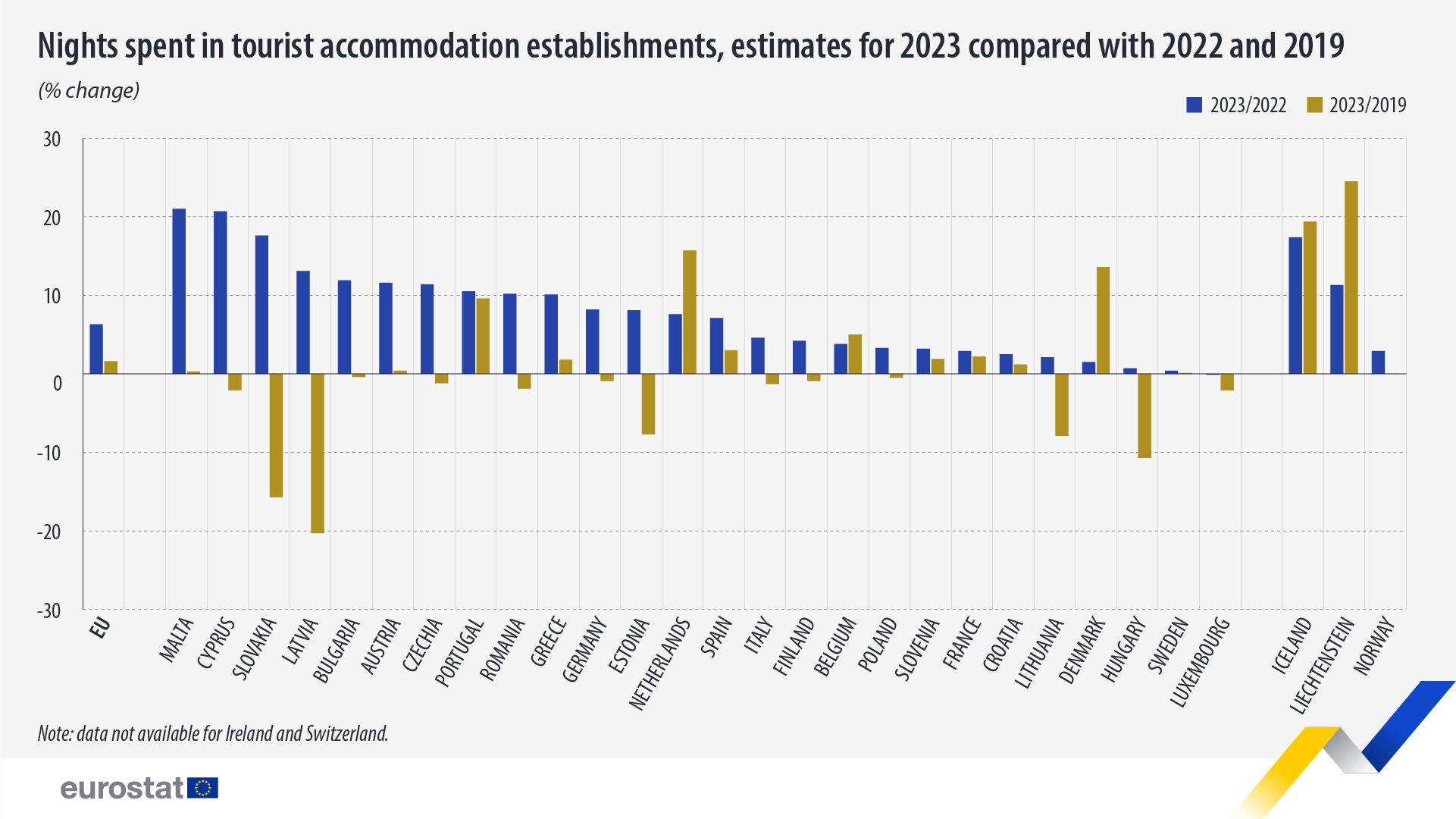In 2023, EU tourism continued to show signs of rebounding from the COVID-19 pandemic. The estimated number of nights spent at tourist accommodation establishments in 2023 reached 2.92 billion, exceeding the pre-pandemic level for 2019 (2.87 billion) by 1.6% and setting a record year for the EU accommodation sector.
In 2023, 171 million more nights were spent compared with 2022 (+6.3%), mainly driven by an increase in nights spent by international guests (+146 million) and to a lesser extent by an increase in nights spent by domestic guests (+25 million). Tourism levels (in terms of nights spent) were 25% higher than ten years earlier (2013: 2.33 billion nights spent).
This information comes from early estimates on tourism published by Eurostat today (based on monthly January-October or November 2023 data, depending on each respective country). The article presents a handful of findings from the more detailed Statistics Explained article.
Source datasets: tour_occ_ninat and tour_occ_nim
Compared with 2022, nearly all EU members recorded an increase in 2023, only Luxembourg recorded a small decrease (-0.1%). In Malta and Cyprus, the growth exceeded 20% and in 8 other EU members, it exceeded 10% (Slovakia, Latvia, Bulgaria, Austria, Czechia, Portugal, Romania and Greece). In absolute numbers, the biggest increase in nights spent was observed in Germany (+32.8 million nights) and Spain (+32.3 million nights).
Source datasets: tour_occ_ninat and tour_occ_nim
International and domestic tourism
Following 3 years with a significantly lower share of international tourists (respectively 29%, 32%, and 44% of all nights spent in 2020, 2021, and 2022), foreigners accounted for 46% of the 2.87 billion nights spent in 2023. This shows a near-return to the pre-pandemic contribution of international tourists (47%). However, in terms of volume, international tourism was still catching up (-0,4% compared with 2019.
In terms of accommodation, hotels and similar accommodation were the dominant segment with 1.8 billion nights spent (63% of the total), followed by holiday and other short-stay accommodation (24%). Campsites accounted for 13% of the total.

.jpg)
